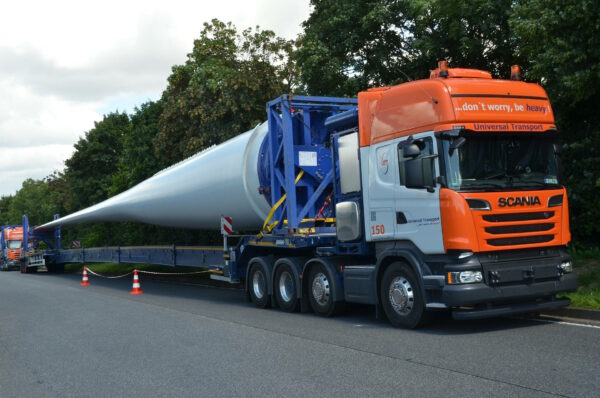
Introduction to Vehicle Weight Classifications
The regulation of commercial vehicles in the United Kingdom operates on a carefully structured weight classification system. Starting from light commercial vehicles at 3.5 tonnes, the system extends through various categories up to specialised transport vehicles capable of handling loads up to 44 tonnes under specific conditions. These classifications ensure safe operation while protecting road infrastructure and maintaining fair competition in the transport industry.
Understanding Weight Categories
The weight classification system begins with light commercial vehicles at 3.5 tonnes, progressing through intermediate categories including 7.5 tonnes, which represents a significant threshold for driver licensing requirements. Medium-duty vehicles typically fall into the 18 to 25-tonne range, while heavy goods vehicles can operate at weights of 26 tonnes and above, subject to specific conditions regarding axle configuration and suspension systems.

For vehicles operating at higher weights, particularly those in the 32- to 44-tonne range, special conditions must be met. These conditions often involve requirements for road-friendly suspension systems, twin tyres on driving axles, and specific axle spacing requirements. The maximum weight of 44 tonnes is primarily reserved for vehicles engaged in combined transport operations, highlighting the UK’s commitment to promoting efficient intermodal transportation solutions.
The Critical Issue of Overloading
Overloading represents one of the most serious challenges in commercial transport operations, impacting three areas: safety, infrastructure, and fair competition. From a safety perspective, vehicles loaded beyond their design specifications experience significantly compromised performance. Their ability to stop quickly in emergency situations is reduced, and steering becomes less responsive, creating dangerous conditions for all road users.
The financial impact of overloading on infrastructure is substantial, with current estimates suggesting an annual cost to the community exceeding £50 million through accelerated wear and tear on roads and bridges. This damage is particularly severe in cases where drive axles exceed their legal limit of 11.5 tonnes, as the relationship between axle weight and road damage is not linear but exponential.
In the competitive landscape of commercial transport, overloading creates an uneven playing field. Operators who deliberately exceed weight limits can generate thousands of pounds in additional illegal profits annually, undermining those who adhere to legal weight restrictions. This practice not only distorts market competition but also compromises the integrity of the entire transport sector.
Technical Specifications and Terminology
Understanding the technical terminology is essential for anyone involved in commercial transport operations. The axle weight, which represents the total force transmitted to the road surface by all wheels on a single axle, is a fundamental measurement in vehicle weight compliance. This differs from the gross vehicle weight, which encompasses the total weight of both the vehicle and its cargo.
For combination vehicles, the train weight becomes relevant, measuring the complete weight of the vehicle, any trailers, and all cargo. These weights must all fall within the plated weight limits, which are specified either by the manufacturer’s plate or the Department’s plate affixed to the vehicle.
Different types of trailer configurations require specific consideration. Draw-bar trailers, which are pulled by rigid vehicles, have different weight distribution characteristics compared to semi-trailers used in articulated vehicle combinations. In articulated configurations, where part of the trailer’s weight is supported by the tractor unit, proper weight distribution becomes especially critical for safe operation.
Special Operating Conditions
Vehicles operating at higher weight categories must meet specific technical requirements. For instance, driving axles that aren’t used for steering must be equipped with twin tyres and road-friendly suspension systems. In these cases, the maximum weight per axle is limited to 8.55 tonnes. Alternatively, if each driving axle is fitted with twin tyres, the maximum allowed weight per axle is 8.5 tonnes.
The spacing between vehicles in combination units is also regulated. A minimum distance of 3 metres must be maintained between the rear axle of the motor vehicle and the front axle of the trailer, ensuring proper weight distribution and vehicle manoeuvrability.
Regulatory Framework and Compliance
Since January 1999, commercial vehicles in the UK can operate under either The Authorised Weight Regulations 1998 or The Road Vehicles (Construction and Use) Regulations as amended. These regulatory frameworks establish the legal basis for weight limits and operating conditions.
Violations of weight restrictions are treated as separate offences for each type of overloading. For example, an articulated vehicle with three axles could potentially incur three separate violations if it exceeds limits on individual axles and gross weight. Both the vehicle operator and driver can be held liable for these violations, emphasising the shared responsibility for compliance.
This regulatory structure aims to ensure that commercial vehicle operations maintain high safety standards while protecting infrastructure and promoting fair competition. Regular monitoring and enforcement of these regulations help maintain the integrity of the UK’s commercial transport sector.
